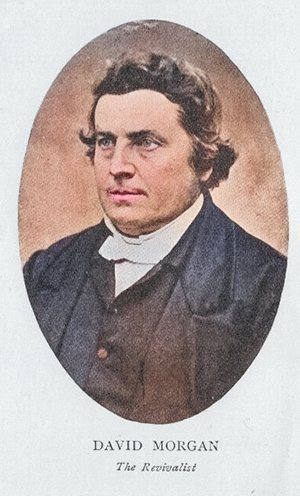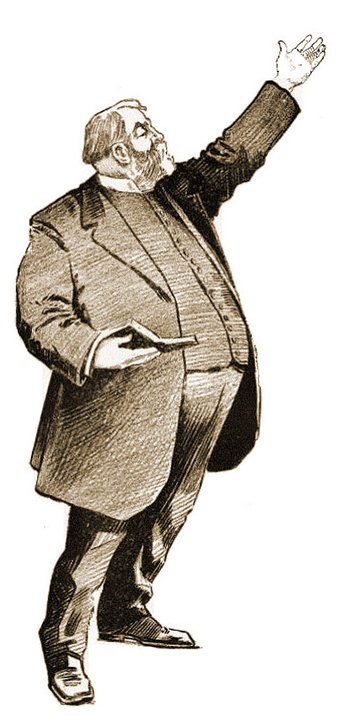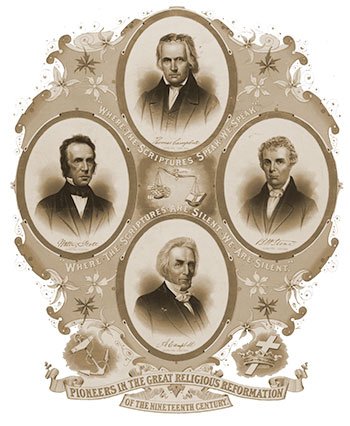1859 Welsh Revival

David Morgan
The Religious Landscape of Wales Before the Revival
In the years leading up to the 1859 revival, the religious climate in Wales was characterized by a sense of formality and spiritual dryness. While churches maintained orthodox beliefs, there was a lack of genuine spiritual engagement 1. Historical accounts suggest that prayer meetings lacked fervour, and preaching often felt theoretical and detached from the realities of daily life 2. Sinful practices were prevalent, and there was a general sense of apathy towards evangelism and the needs of the unconverted 2.
Wales had experienced a series of revivals in the preceding century, beginning in 1735 with the rise of Methodist preachers like Daniel Rowland and Howell Harris 1. These revivals, however, were often followed by periods of decline and spiritual stagnation. By the mid-19th century, a sense of complacency had settled over many churches, and there was a growing need for a fresh outpouring of the Holy Spirit 1.
Adding to this context, a significant cholera outbreak in Merthyr Tydfil in 1849 had a profound impact on the religious landscape. This outbreak led to widespread fear and uncertainty, driving many people to seek solace in religion and join churches 3. While some questioned the genuineness of these conversions, the event undoubtedly contributed to a heightened sense of religious awareness in the years leading up to the 1859 revival.
Antecedents and Catalysts of the Revival
The 1859 Welsh Revival did not emerge in a vacuum. It was influenced by a number of factors, including the broader religious climate of the time and the impact of earlier revivals. One significant antecedent was the Third Great Awakening, a period of religious revival that swept through the United States in the late 1850s 4. This American revival had a profound impact on Humphrey Jones, a Welsh Methodist minister who had been living in the United States 4. Upon his return to Wales in 1858, Jones was determined to ignite a similar spiritual awakening in his homeland 5.
Adding to this sense of anticipation,
, expressed a deep longing for revival in his personal diary as early as 1855. He wrote, “It is a big thing to have a feeling that God would revive His work… As well as praying, we should be doing our utmost to revive the work” 1. This yearning for spiritual renewal, shared by many within the church, created fertile ground for the revival to take root.
Another crucial catalyst was the growing emphasis on prayer among Welsh Christians. Inspired by reports of the American revivals, prayer meetings became more frequent and fervent 2. Congregations united in prayer, seeking God’s blessing on their communities and a renewed outpouring of the Holy Spirit 2. These prayer meetings laid the groundwork for the revival, creating an atmosphere of expectancy and spiritual hunger 6. As one observer noted, prayer helped to bring about “a climate of quiet expectancy and hopeful yearning” 6.
Key Figures and Their Contributions
While the 1859 Welsh Revival was not solely dependent on individual personalities, certain figures played crucial roles in its development and spread. Humphrey Jones, with his firsthand experience of the American revival, brought a renewed sense of urgency and passion to his preaching 2. He emphasized the need for immediate repentance and a personal encounter with Christ, challenging the prevailing complacency of the time 2.
David Morgan, a Calvinistic Methodist minister, emerged as another key leader 4. He was known for his powerful preaching and his ability to connect with people from all walks of life. During the revival, Morgan experienced a remarkable spiritual gift, described as the ability to “remember everything of religious nature that I had ever learnt or heard” 2. This gift, combined with a renewed anointing, enabled him to effectively minister to individuals and see many come to faith in Christ 2.
It is important to note that the 1859 revival was not a monolithic event. There were distinct streams of revival activity, each with its own characteristics and leaders. While Humphrey Jones played a significant role in initiating the revival, another wave of revival emerged organically through pre-meetings and prayer gatherings 7. This highlights the diverse ways in which the Holy Spirit moved during this period.
In addition to Jones and Morgan, numerous other individuals contributed to the revival’s success. These included local pastors, lay preachers, and ordinary Christians who were caught up in the wave of spiritual fervor 6. The revival was characterized by a sense of collective participation, with people from all denominations and social backgrounds coming together to seek God and share their faith 8.
Prayers and Practices of the Revival
The 1859 Welsh Revival was marked by certain distinctive prayers and practices that contributed to its impact. Prayer was central to the revival, with prayer meetings taking place in homes, churches, and even workplaces 2. These meetings were often characterized by intense emotion, with people weeping, confessing their sins, and crying out to God for mercy 8. Hymns became a powerful expression of faith and a means of uniting people in worship 8.
Another significant practice was the emphasis on personal testimony. People who had experienced conversion or spiritual breakthroughs during the revival were encouraged to share their stories with others 5. These testimonies served as powerful witnesses to the transformative power of faith and inspired others to seek a similar experience 9.
Immediate and Lasting Results
The 1859 Welsh Revival had a profound and immediate impact on Welsh society. Crime rates decreased dramatically, and there was a marked decline in social ills such as drunkenness and immorality 2. Churches were filled to capacity, and there was a renewed sense of religious observance throughout the nation 8.
The revival’s impact extended beyond general societal changes. In Ballycarry, for example, the revival led to a dramatic transformation in the local church. Reverend John Stuart, a minister in Ballycarry, described the scene: “Then was our church filled to suffocation… The hitherto unoccupied pews were ardently sought after… I had living men and living women before me” 10. This account illustrates the revival’s power to revitalize local churches and bring about genuine spiritual renewal.
The revival also had a lasting impact on the religious landscape of Wales. It led to a significant increase in church membership, with estimates ranging from 80,000 to 100,000 converts 3. The revival also fostered greater cooperation among different denominations, as Christians from various backgrounds came together in a shared experience of faith 2.
Furthermore, the 1859 revival had a significant impact on Welsh culture and identity. It contributed to a renewed interest in the Welsh language and a strengthening of national pride 3. The revival also inspired a number of social reforms, as Christians sought to apply their faith to issues such as poverty, education, and social justice 3.
One of the most significant lasting results of the revival was its challenge to the prevailing Calvinistic theology. While Calvinism emphasized the sovereignty of God in salvation, the revivalists placed a greater emphasis on the importance of immediate decisions for Christ 2. This shift in theological emphasis had a profound impact on the way evangelism was conducted and contributed to the large number of conversions during this period.
Scholarly Perspectives on the Revival
Modern scholarship has shed further light on the impact of the 1859 Welsh Revival. Studies using historical data have shown a clear correlation between the revival and a reduction in crime rates, particularly offenses related to drunkenness 11. This supports contemporary accounts of the revival’s positive social effects.
Other scholarly analyses have focused on the revival’s impact on religious practices and beliefs. For example, research has highlighted the significant role played by women and young people in spreading the revival and sustaining its momentum 12. This underscores the revival’s broad appeal and its ability to engage people from all walks of life.
Context and Relationship to Other Revivals
The 1859 Welsh Revival was not an isolated event. It was part of a broader wave of religious awakenings that swept through various parts of the world in the 19th century. These revivals were often interconnected, with news of spiritual breakthroughs in one region inspiring and influencing others.
The Ulster Revival
The Welsh revival had close ties to the revival in Ulster, which occurred around the same time 5. The Ulster revival was sparked by a prayer meeting in Ahoghill that began in 1857, where a small group of young men gathered regularly to pray for an outpouring of the Holy Spirit 5. This persistent prayer laid the groundwork for a powerful awakening that swept through Ulster in 1859, with an estimated 100,000 people converting to Christianity 13.
There was a significant exchange of ideas and experiences between Wales and Ulster during this period, with preachers and lay people traveling to witness the revivals and bring back the fire to their own communities 5. This cross-fertilization of revival fervor contributed to the intensity and spread of both awakenings.
The Scottish Revival
The 1859 revival also had connections to the spiritual awakening that occurred in Scotland during the same period. The Scottish revival was characterized by a similar emphasis on prayer, passionate preaching, and personal testimony. It saw a significant increase in church attendance and conversions, particularly in major cities like Glasgow and Dundee 5.
While the Scottish revival had its own unique characteristics and leaders, it shared a common spirit with the Welsh and Ulster revivals. This suggests a broader movement of the Holy Spirit at work across the British Isles during this time.
Historical Context
The 1859 Welsh Revival also built upon earlier revivals in Wales, such as those led by Howell Harris and Daniel Rowland in the 18th century 12. These earlier revivals had laid the groundwork for a culture of religious fervor and a receptivity to spiritual awakenings.
Timeline of the 1859 Welsh Revival
To provide a clearer picture of the revival’s development, here is a chronological timeline of key events:
| Date | Event | Citation |
| 1735-1859 | Series of revivals occur in Wales, culminating in the 1859 revival. | 1 |
| 1857 | The Third Great Awakening begins in the United States. | 4 |
| 1857 | A prayer meeting begins in Ahoghill, Ulster, that would later spark the Ulster revival. | 5 |
| 1858 | Humphrey Jones returns to Wales after experiencing the American revival. | 5 |
| February 1859 | Calvinistic Methodist meetings are held in Aberaeron, marking the beginning of the revival. | 2 |
| February 1859 | David Morgan preaches at the Aberaeron meetings and experiences a spiritual breakthrough. | 2 |
| 1859 | The revival spreads throughout Wales, with prayer meetings, conversions, and testimonies. | 5 |
| 1859 | The Ulster revival begins. | 13 |
| July 1859 | Humphrey Jones suffers a nervous breakdown and returns to the United States. | 2 |
| End of 1859 | The Welsh revival begins to subside, but its impact continues to be felt. | 2 |
| 1860 | Thomas Phillips writes about the revival’s power in Llangernyw. | 2 |
Beneficial Takeaways from the Revival
The 1859 Welsh Revival offers several valuable lessons for Christians today. It highlights the importance of:
- United and fervent prayer: The revival was preceded and sustained by a widespread commitment to prayer, demonstrating the power of collective intercession.
- Personal testimony: Sharing personal experiences of faith can be a powerful tool for evangelism and encouragement.
- Passionate preaching: The revival was fuelled by preachers who spoke with conviction and urgency, challenging complacency and calling for immediate repentance.
- Cross-denominational unity: The revival brought together Christians from various backgrounds, demonstrating the power of unity in the midst of diversity.
- Social action: The revival inspired a wave of social reforms, showing that faith should be expressed in practical ways that address the needs of society 3.
Conclusion
The 1859 Welsh Revival was a remarkable event that transformed the religious and social landscape of Wales. It was a time of intense spiritual awakening, marked by fervent prayer, passionate preaching, and widespread conversions. The revival’s legacy continues to inspire and challenge Christians today, reminding us of the transformative power of faith and the importance of seeking a fresh outpouring of the Holy Spirit.
More than just a historical event, the 1859 revival offers a powerful example of how God can move in unexpected ways to bring about spiritual renewal. It reminds us that even in times of spiritual dryness and complacency, God can ignite a flame of revival that sweeps through communities and nations. The revival’s emphasis on passionate love for Jesus 14, coupled with its practical impact on society, provides a model for authentic Christian living that is still relevant today. By learning from the lessons of the past, we can be inspired to seek a similar outpouring of the Holy Spirit in our own time, leading to transformed lives and a renewed commitment to sharing the Gospel with the world.
Works cited
- The 1859 Revival in Wales (Part 1) – Exiled Preacher, accessed on December 17, 2024, http://exiledpreacher.blogspot.com/2009/02/1859-revival-in-wales-part-1.html
- 1859 Welsh Revival – BEAUTIFUL FEETBEAUTIFUL FEET, accessed on December 17, 2024, https://romans1015.com/1859-welsh/
- 1859 Welsh revival – Wikipedia, accessed on December 17, 2024, https://en.wikipedia.org/wiki/1859_Welsh_revival
- en.wikipedia.org, accessed on December 17, 2024, https://en.wikipedia.org/wiki/1859_Welsh_revival#:~:text=Humphrey%20Jones%2C%20a%20Methodist%20minister,recruited%20Morgan%20to%20the%20cause.
- Revival in Wales 1859 – UK Wells, accessed on December 17, 2024, https://ukwells.org/revivalists/revival-in-wales-1859
- Highlights of the 1859 Welsh Revival – CultureWatch, accessed on December 17, 2024,
https://billmuehlenberg.com/2023/09/07/highlights-of-the-1859-welsh-revival/ - The Welsh Revivals | 1859 and 1904 | Full Movie | Dr. Gwyn Davies | Dr. Noel Gibbard, accessed on December 17, 2024, https://www.youtube.com/watch?v=Vqpr9x_Mmjg
- The 1859 Prayer Revival In Wales 6/95 – Herald of His Coming, accessed on December 17, 2024, https://heraldofhiscoming.org/index.php/read-the-herald/past-issues/332-past-issues/1995/jun95/4307-the-1859-prayer-revival-in-wales-6-95
- I Saw The Welsh Revival by David Matthews – The Gospel Truth, accessed on December 17, 2024, https://www.gospeltruth.net/Isawthewelsh.htm
- The 1859 Revival – Zion Christian Ministry, accessed on December 17, 2024, https://www.zionchristianministry.com/publications/books-by-shawn/the-1859-revival/
- Religious Revival and Social Order – Washington State University, accessed on December 17, 2024, https://wpcdn.web.wsu.edu/cahnrs/uploads/sites/5/2020/11/Lowe_WelshRevival_v2_compressed.pdf
- Revival in Wales, 1859 part 2 – Church History Review, accessed on December 17, 2024, https://lexloiz.wordpress.com/2023/03/13/revival-in-wales-1859-part-2/
- The 1859 Revival, accessed on December 17, 2024, https://www.1859.org.uk/home
- Welsh Revivals of 1859 and 1904 | Christian History Institute, accessed on December 17, 2024, https://christianhistoryinstitute.org/store/dvd/501399d/welsh-revivals-of-1859-and-1904



